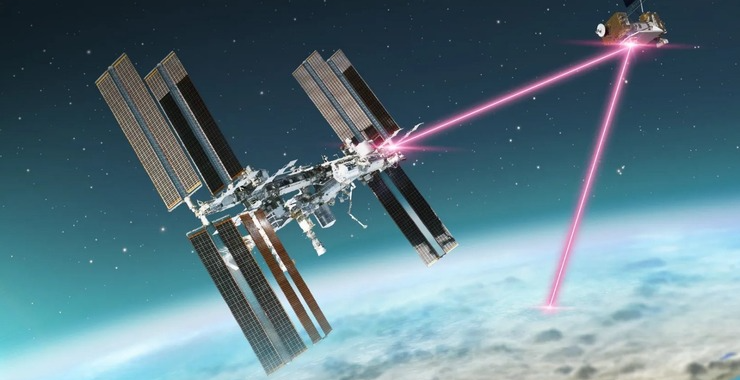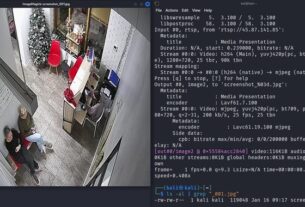Welcome back, my aspiring cyberwarriors!
Satellites and the communication they engender have become a crucial element in our modern economies. They enable us to use the internet, television, GPS, and mobile communication from anywhere on the planet. In addition, the world’s most powerful militaries are dependent upon satellites for visual and signal reconnaissance and communication.

These satellites, many of them developed prior to our modern security concerns, are vulnerable to hacking and intercepting their communication. In some cases, they may also be vulnerable to command and control.
In this series, we will be examining multiple ways these satellites can be hacked. Before we begin, let’s say a few words about what they are and how they work.
What Is a Satellite and Where Did They Come From?
When we use the term satellite, we usually mean an artificial satellite. Any object orbiting a planet is a satellite but in our modern and everyday parlance, we usually mean a man-made, artificial satellite.
These artificial satellites have a reasonably recent history with the first satellite having been launched on October 4, 1957, by the Soviet Union. This satellite was given the name Sputnik (this word is usually translated from Russian as “spouse” or “traveling companion”). Sputnik 2 was then launched on November 3, 1957. These satellites were rather simple objects compared to today’s communication systems in space. The US then launched its first satellite, Explorer I, the next year on January 31, 1958. Although these satellites were designed for scientific use, both nations regarded their satellite programs as critical to their military and Cold War ambitions.

From a historical context, these two nations led the way in satellite development and launches because they had the rocket launch capability that no other nation possessed. This rocket technology was a residual of WWII Nazi technology. During the war, the German Nazis had developed the world’s most sophisticated rocket technology and used it in the V1 and V2 rockets that they used to bomb Britain. When the war ended in 1945, both the US and Russia scrambled to control this technology by giving the key scientists asylum and immunity from prosecution for war crimes. These teams of scientists became the backbone of the US and USSR space programs.
By 2024, a number of nations have developed and launched their own satellites including; Algeria, Argentina, Australia, Austria, Brazil, Canada, Chile, China, Denmark, Egypt, Finland, France, Germany, India, Iran, Israel, Italy, Japan, Kazakhstan, South Korea, Malaysia, Mexico, the Netherlands, Norway, Pakistan, Poland, Russia, Saudi Arabia, South Africa, Spain, Switzerland, Thailand, Turkey, Ukraine, the United Kingdom and the United States.
Satellite Sub-Systems
Satellites have become complex systems in the 21st century. These are computer-controlled systems with subsystems for:
Power Generation – these systems need electricity to power their computers and communication equipment. Modern satellites generally use solar panels for nearly unlimited and eternal electricity generation ( solar electricity technology was first developed to power these satellites).

2. Thermal Control – it is VERY cold in space. Many components can not operate at the nearly absolute zero temperatures of space, so the system must provide some heat to those components facing away from the sun and cooling to those components facing away from the sun to maintain proper functioning.
3. Telemetry – this system transmits equipment operation data to the earth control stations and receives commands from the earth control stations.
4. Attitude Control – this system measures the vehicle orientation and uses actuators to re-orient the vehicle to proper altitude, orbital position, and antenna positioning.
5. Communication – in many of these satellites the communication subsystem is the most critical. This subsystem consists of:
a. a receiver for “catching” signals from the earth-based stations
b. an amplifier to boost the signal strength
c. sorting the signals and directing the output signals to the proper downlink antenna(s)
and transmitting the signal to the earth.
If any of these systems malfunction, these very expensive pieces of equipment can become a space brick.
Orbits
Most satellites are geocentric, meaning that they have the Earth as their focus and center. Of course, some satellites go on missions to other planets and solar systems but these are rare and usually for scientific purposes.
Those that circle the earth or are geocentric, we can categorize by the type of orbit they maintain. Low Earth Orbit or LEO is usually defined as those satellites within 2000km of the earth’s surface, Medium Earth Orbit or MEO is between 2000km and 36,000km from earth’s surface, and High Earth Orbit or HEO are those satellites above 36,000km.

In addition, some satellites are in geosynchronous orbit or GEO. These satellites are over 36,000km from the Earth’s surface and travel at a speed that keeps their position relative to the Earth fixed. In this way, we always know where that satellite is in the sky and can aim our antennas at that spot. Satellite TV and older satellite internet services used geostationary satellites (Elon Musk’s Starlink uses low-orbit satellites that are NOT geostationary).
Summary
Satellites are a relatively new technology that modern economies are dependent upon. Their proper functioning can be crucial to many earth bound systems such as navigation, communication, Internet access, and military reconnaissance. Many of these systems are not properly secured and compromising them can be relatively simple with the proper skills, hardware and software. This may endanger secure communication, global positioning, and even military strategies and capabilities.
For more on Satellite Hacking watch this space and series or attend our upcoming class.





